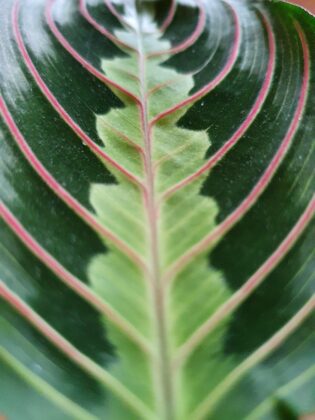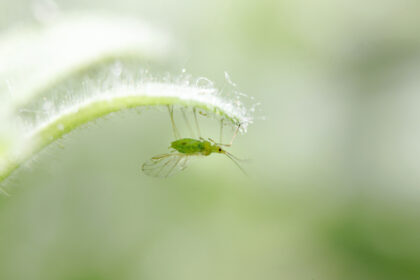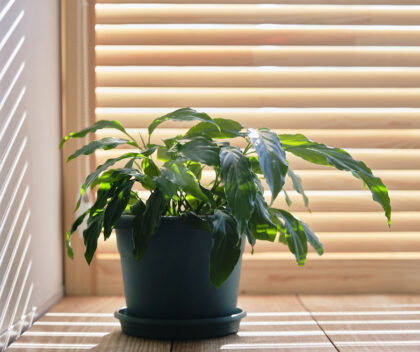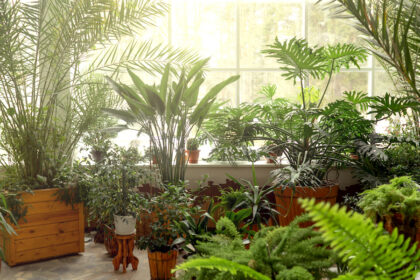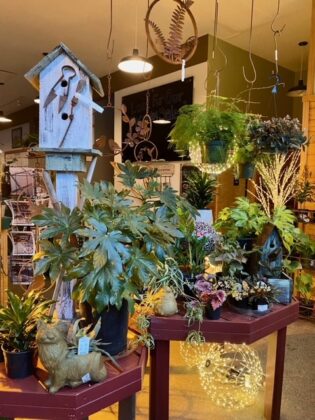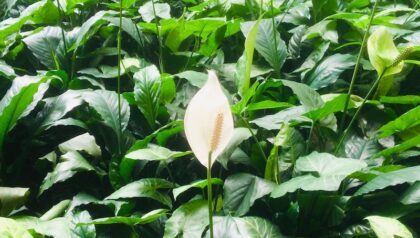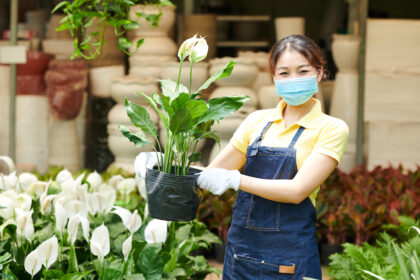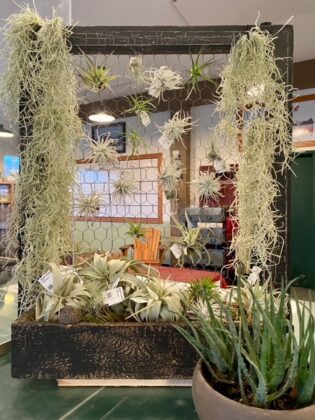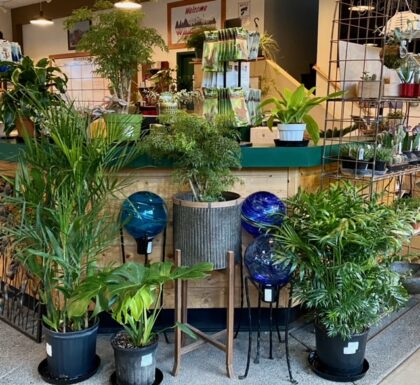-
Main Office (253) 531-7499
Tacoma Landscape Supply (253) 472-1252
Gig Harbor Landscape Supply (253) 858-8184
NE Tacoma Landscape Supply (253) 572-3009
Blog
Houseplants that Thrive in Pacific Northwest Summers
Let’s face it, Washington State can be weird when it comes to seasons. It’s also one of the most beautiful states; rich in foliage and greenery. It’s no wonder, then, that we love to bring a little of the Pacific Northwest indoors! With our summers growing increasingly warm, nurturing houseplants in the summer heat can become challenging. If you’re looking to for houseplants that thrive in Pacific Northwest summers, here are a few to add to your indoor garden.
Houseplants that Thrive in Pacific Northwest Summers
Snake Plant
Snake Plants are a popular choice among many, and for good reason! They’re known to be tough, and thrive in a variety of conditions, save for freezing nights. They’re particularly happy in sunlight, which makes them a great choice for Washington summers. Snake plants can grow quite large–up to three feet in height–and make a nice statement decor for an indoor space.
Philodendron
The Philodendron is a PNW staple and provides a soft, light shade of greenery. While sunlight is important, philodendrons do best with limited, indirect sunlight. While growing these, watch for drooping leaves, as that can be a sign your philo is receiving too much or too little water. However, these are very beginner friendly plants and a good choice for bringing some of the outdoors in!
Bird of Paradise
Feeling adventurous? Need a little tropical? Bird of Paradise–also known as Strelitzia–is a fun option for the eclectic spirit. These can grow up to 6 feet in height and take between three and five years to mature. While they do prefer a more humid environment, Washington provides a nice balance of warmth and sunlight that help keep them happy. Keep your Bird of Paradise in indirect sunlight throughout the year and watch it thrive!
Prayer Plant

A common sight around Pacific Northwest homes, prayer plants thrive in temperatures between 60 and 80 degrees. These plants are happiest when regularly misted, and enjoy indirect sunlight. They thrive in a variety of different soils, and just ask for regular water. Their colorful leaves bring vibrancy to many indoor spaces!
While we’ve only touched on a few of the options available, our state is a great place to begin raising indoor plants. Summer is a good season to start raising your indoor plants as the long days and plentiful sunlight will help them grow into strong, healthy greenery. Then when those summer days are a little too warm for your taste, you can enjoy the outdoors inside your own home, too!
How to Remove and Prevent Houseplant Pests + 3 Common Pests and How to Get Rid of Them
Adding some greenery and picking up the healthy hobby of indoor gardening is supposed to be a relaxing experience. But when those houseplants become riddled with indoor pests it can be a hassle and add stress to an otherwise relaxing hobby.
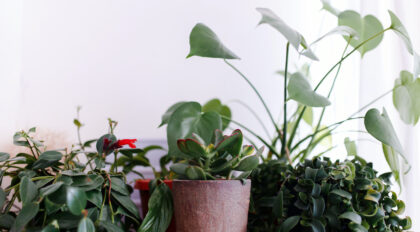
No one likes pests. Fleas, ants, ticks, and other creepy crawlies are a nuisance that can be a pain to deal with. If you aren’t familiar with houseplant pests, it can be difficult to figure out how to get rid of them.
Whether they hitch a ride in or sneak in later, it can be a pain getting them out. to help keep your plants healthy and pest-free we’ve compiled this short list of common houseplant bugs and steps you can take to get rid of them.
How to Remove and Prevent Houseplant Pests
Removing Bugs
When it comes to removing pests from your houseplants it’s crucial that you handle them with care. Being too forceful or using the wrong solutions can damage your plants. While some houseplant pests are more tenacious than others, be gentle when removing or wiping bugs away.
Methods for Removing Pests
When you discover a new pest on your plants, the first thing you want to do is assess the situation. Take note of how many there are and where they are. Are they under the leaves or on the stalk? Infestations that have infiltrated the soil may require replanting, as larvae in the soil have the potential to invade a plant’s root system.
Wiping: In many cases you can use a damp cloth or one dipped in an alcohol or insecticide solution to remove pests. This method is especially effective for pests that don’t cling to your plant as much, like aphids.
Hand-removal: Some bugs like scale are easier to remove using your nails or hands. Gently use a nail to peel bugs away from the stalk and put them into soapy water.
Prevention
Once you’ve gotten rid of the insects you can see, it’s time to take steps to prevent future infestations from occurring. There are several methods for presentation that don’t involve heavy chemicals.
Neem oil and essential oils: Neem oil is a go-to natural insecticide that’s effective in deterring aphids, leaf miners, ants, and even certain types of fungus. Another benefit of neem oil is that it isn’t toxic to cats or dogs, making it a preferable option to certain essential oils like peppermint.
Castile Soap: Castile soap is also an effective insect repellent. When mixed into a water solution and sprayed directly onto insects it dissolves the outermost layer of their protected bodies.
This video has a great tutorial on making your own castille soap spray mixture for your plants.
Common Houseplant Pests and What to Do About Them
Gnats
Fungus gnats, to be exact. If you’ve been a plant owner for any length of time you may have noticed a slight uptick in the number of gnats in your home. These little buggers feed off of the decomposing matter found in over-moistened soil.
Having one or two fungus gnats isn’t going to do more than annoy you. However, larger infestations can wreak havoc on your plant’s root systems.
Avoiding these types of infestations and deterring fungus gnats can be solved by using well-draining soil and avoiding overwatering.
Aphids

You may recognize aphids as small green or black bugs you see outside. Unfortunately, when these pests come indoors they can feed off of your plant’s sap, causing issues like yellowing and abnormal growth.
Wiping with alcohol-dipped swabs is the best way to help get rid of these pests. You can also spray them with water, but this method usually works best with heartier, well-established plants (i.e. not delicate houseplants).
Related Reading: How to Get Rid of Aphids Naturally
Leafminers
If you’ve seen trails cropping up on your plants leaves, it’s likely that you may have a leafminer problem. Leafminers is an umbrella term that refers to a variety of different kinds of bugs that eat away at your leaves, leaving these trails behind.
When you notice these trails, the best course of action is to remove them as soon as possible to keep these insects from spreading to other areas of the plant.
If you have questions about what soil is right for your gardening needs, our knowledgeable staff at Walrath can help. Come in and ask us about the benefits of different types of soil for all types of gardening.
You can also send us an email with your specific questions!
How Too Much or Too Little Water and Light Effects Your Plants
Whether you’re a seasoned plant parent or a first-time planter, there are certain truths about plants you must know in order to have a successful and thriving indoor garden.
While it may seem redundant, it’s never a bad idea to go back to basics and explore the 5 main components of cultivating house plants. Light, water, fertilizer, humidity, and soil. An issue with any of these components can lead to all kinds of issues with your plants. Let’s take a look at how too much or too little of one of two of these components – water and light– can affect your plants.
How Too Much or Too Little Water and Light Effects Your Plants
The sun is necessary for sustaining life, especially plant life. But not all plants require the same amount of light in the same intensity. In order to have a successful in-home garden, it’s important to understand the needs of your plant.
Light
The sun is necessary for sustaining life, especially plant life. But not all plants require the same amount of light in the same intensity. In order to have a successful in-home garden, it’s important to understand the needs of your plant.
What happens when there’s too much light.
How your plants react to light depends on the particular needs of that plant. However, there are ways to tell if a plant is receiving too much or too little light.
When a low-light plant (or any plant, for that matter) get’s more sun it needs, there are outward signs of distress (kind of like a sunburn). Yellowing or browed leaves that seem crispy on the ends can be a sign of too much light. Over time, continued light exposure can slow growth. The solution? Try moving your plant to a spot where it receives more indirect light.
What happens when there’s too little light.
Just like too much light is an issue, too little light can also affect your plants. Unfortunately, some of the signs of too little light overpack with those that indicate an excess. Plants that receive too little sunlight may also turn yellow. However, these plants are more likely to look wilted rather than scorched. Leaves may also drop. The solution to this is clear: move your plant to a better lit area with more direct sunlight.
Water
When there’s too much water.
If your plant is getting too much water you may notice the soil is dark and may smell musty. Overwatered plants can quickly begin to suffer from root rot, which can compromise the entire plant. Your first step to fix these issues is to stop watering the plant to let the soil dry out. If you suspect root rot, gently remove your plant from its pot to inspect the roots. If the root system looks mushy and slimy, here is what you do:
Take a pair of pruning scissors and carefully cut away at the affected areas, preserving as much of the root system as possible. Replace your plant in a pot of fresh, dry soil that drains well.
When there’s too little water.
In contrast, plants that are given too little water will often begin to look visibly dry. Leaves may curl in, and stems may appear sullen. For these dehydrated plants, the best course of action is to saturate the soil (ensuring the pot drains properly).
Key to a successful indoor garden is well-draining potting soil. At Walrath we provide a number of soil mix options, including a mix specially designed for contain-grown plants. Visit one of our locations to pick up a bag today. We have locations is Gig Harbor, Tacoma, Lacey, and Everett.
Got questions? Please feel free to contact our team today.
Cultivating Your Indoor Garden: Beginner’s Guide
It’s finally planting season! As we transition into more predictable, sunnier weather, many of you may be breaking out the trowels. In later blogs we’ll give all the details on best practices (and soils!) for planting a thriving outdoor garden.
In this blog, though, we’re going to talk about cultivating your indoor garden. Maybe you started a garden to bring in some light this winter, maybe you’ve been eyeing those windowsill succulents, or maybe you simply don’t have the outdoor space but love gardening. Whatever your reason, we fully believe in the benefits of keeping indoor houseplants.
Like any garden, indoor gardens must meet specific criteria in order to meet the needs of your plants and allow them to thrive.
In this blog we’ll give you tips on how to help your plant babies truly bloom.
We’ve discussed indoor gardening quite a bit in our past blogs, Particularly the benefits of keeping indoor houseplants. Indoor gardening can appeal to almost anyone for any reason. It’s a great alternative for those that simply don’t have the outdoor space to garden. Plus, indoor gardening helps bring some of the outdoors in, and in the process brings air-purifying and health benefits with it.
Just because you’re gardening indoors doesn’t mean you’re limited in what you can grow. Typically, when we think of indoor plants we think of Orchids, Monsteras, succulents, etc., but you can grow much more than just these. Herbs, fruits, and veggies are just as feasible to grow indoors, and may actually be at advantage growing inside, depending on the type of plant.
Indoor spaces are less susceptible to the variability of light and weather that outdoor plants endure. Inside, it’s much easier to maintain a regular temperature and avoid extreme highs or lows. This can help certain types of plants thrive.
Types of Plants to Grow Indoors
We’ve talked before on the blog about the types of plants that thrive well indoors. Here are some other plants — fruits, veggies, and herbs– that you may also want to consider:Vegetables:
- Green onion
- Carrots
- Spinach, Kale, and other leafy greens
- Hot peppers
- Potatoes
- Tomatoes
- Radish
Fruits:
- Strawberries
- Bananas
- Lemons
- Blueberries
Herbs:
- Mint
- Basil
- Oregano
- Rosemary
- Thyme
Components for Cultivating Your Indoor Garden

Light
Like most of the items in this list, the amount of light your plants will need to thrive will depend primarily on the type of plants you keep. If you live in a shadowy apartment with little natural light, it may be best to choose low-light plants. You could also invest in indoor grow lights that can help supplement the light your plants will need to thrive.
Water
Water, the source of all life on Earth. It’s important to make sure that your plants are adequately (but not over) watered. Again, the amount of water your plants need will be dictated by the types of plants you decide to keep. Cacti, for example, will need less frequent watering than say, an orchid.
Something to keep in mind while watering is that extreme temperatures in water can send your plant into shock. If your plant is having issues with cold water from the tap, opt for room temperature distilled water.
Humidity
Especially during the winter months where electric heating can dry out the air, it’s important to remember that humidity can have a huge effect on your plants. Since it gets pretty cold here in Western Washington, it might be a good idea to purchase a humidifier to combat the effects of a raging heating system.
Soil
If you’re potting your plants (versus cultivating, say, an air plant garden) it’s important to choose a soil that will serve your plant best. A well-draining premium gardening blend is a great option. This mixture allows your plants to drain well and can help prevent root rot.
Tip: Remember to stay conscious of overwatering. Root rot can also be caused by overwatering plants, causing roots to sit in excess moisture.
For all your soil needs, come to Walrath. If you have any questions contact our team today!
Related Reading:
Healthline: 7 Science-Backed Benefits of Indoor Plants
Plant Highlight: Peace Lilies
There are literally hundreds of options when it comes to choosing which plant is right for you. While we can’t make the decision for you, we can definitely help make you a more informed plant buyer.
This week, we’re highlighting the peace lily.
This little tropical plant, native to South America, is incredibly popular when it comes to indoor gardening, and it’s easy to see why: not only are peace lilies beautiful, they’re also incredibly easy to grow and keep alive. Whether or not you have a “green thumb”, a peace lily may be the perfect addition to your indoor garden.
Light
Peace lilies thrive when they’re able to get ample bright, indirect sunlight. Choose a window or a spot in the house that gets plenty of indirect light. Too much light can result in browned, scorched leaves. In the summer you can let your peace lily get some fresh air, but make sure that temperatures stay within the 60 to 90 degree F range. Peace lilies are naturally found in humid areas, so if it’s a little muggy outside on a warm day, that’s even better.
Water
It’s best to keep a peace lily’s soil moist, but be wary o overwatering. Make sure that soil and pots have adequate drainage to deter root rot. However, overwatering is always better than not watering at all.
Sometimes, plants can be sensitive to the minerals found in tap water. If you find your plants are picky drinkers, a bottle of distilled or filtered water should do the trick.
Size
Peace lilies vary widely in size, ranging from mere inches up to 6 feet tall. It’s important to ensure that your peace lily is planted in a pot that can accommodate the root system.
Possible Problems with Peace Lilies

Peace lilies are known for their resilience to fungus and disease. However, there are still some issues that can behalf a peace lily.
Browned Spots
There are a few different causes for browned leaves. However, the most common cause is overexposure to sunlight. Like us, peace lilies can get a little sunburned if they’re put out in direct sunlight for too long. While there isn’t anything to be done about the browned section of leave, you can salvage the rest of the plant by moving it to a windowsill or table that doesn’t get any direct sunlight (plenty of indirect light is perfect!).
Chlorosis
Chlorosis is a leaf condition characterized by yellow spotting on the leaf of a plant. It’s caused by a lack of chlorophyll. Though uncommon, peace lilies can suffer from chlorosis if you fail to repot them or fertilize their soil.
The best cure for chlorosis is to place your peace lily in fresh, fertilized potting soil so that it can absorb much-needed nutrients.
Stunted growth
There are several factors that can stunt a plant’s growth. Being in too small of a pot is one factor. It’s always good to make sure your plant has at least 2 inches of space between the root ball and the sides of the pot. If you keep your plant in too small of a pot or don’t repot it once it grows, you run the risk of your plant becoming root-bound.
Related reading:
A Guide to Growing Peace Lily (Garden Design)
Peace Lily Problems (All About Gardening)
How Houseplants Reduce Stress
A lot of times when we think about houseplants we think of an orchid here or a succulent there— something that adds mostly an aesthetic value. But did you know houseplants reduce stress, too? It’s true! While houseplants definitely do add a lot of beauty and light to any indoor space, there are actually measurable health and wellness benefits that they bring with them, too!
According to a study conducted on over 4,000 people worldwide, having in-home greenery helped to improve the emotional wellbeing of nearly 3/4 of participants. The study, conducted in the midst of the COVID-19 lockdowns, noted that people who kept houseplants during lockdowns experienced less frequent negative emotions than those who didn’t keep plants.
The stress-reducing effects of indoor plants aren’t just constrained to the home.
Studies have also shown that houseplants reduce stress at work, too! Office plants have a measurable effect on stress level and productivity in the workplace.
So, what is it about indoor greenery that helps us feel calm and ease stress?
Why Houseplants Reduce Stress
Rhythm and structure
According to Drew Pate, chief of psychiatry at LifeBridge Health in Baltimore, “watering and nurturing plants can serve as a mindful, calming exercise for many people”. Tending to the specific needs of a plant can be a calming and peaceful respite from our otherwise busy lives. Just taking the time to fill up a watering can, adjust a plant, and simply be present with the little slice of nature you’ve cultivated indoors can give you the space to unwind and be fully present where you’re at.
A caring outlet
Much like pets, houseplants reduce stress by providing a sense of companionship and responsibility for caring for another living thing. Some researchers have proposed that the stress reducing quality that houseplants bring to a home could be due to the sense of purpose they allow us to feel.
Whether you buy your plant when it already has foliage or you raise it from a seed, it’s exciting and rewarding to see how your actions of watering it and caring for it can help it grow. This reward is what may translate to stress reduction and increase in a positive outlook.
The thought behind this, essentially, is something to the effect of “hey, if I can make a tangible difference in the life of this plant, I could make positive contributions elsewhere in life, too”.
These feelings of purpose and drive are especially important in the midst of this pandemic, when so many factors can leave us looking for some sense of contribution and control.
A Biologic Factor

In addition to caring and creating mindfulness, there may actually be a biological effect that indoor plants may have on the autonomic nervous system (i.e. a biological reasons why houseplants reduce stress). A study in 2015 found that interaction with indoor plants suppresses the sympathetic nervous system and helps to lower blood pressure, causing a tangible decrease in stress response.
7 stress-relieving plant recommendations
While it’s true houseplants reduce stress on the mind and body, not all plants were created equal. Some plants may be more-adept at helping to reduce stress responses than others. If you’re unsure where to begin, here 7 plant recommendations for stress-relieving plants to add to your indoor garden.
- Lavender. known for its soothing effects across the health and wellness community and in skincare, lavender’s soothing scent is a great choice to keep in the bedroom to help reduce stress and improve sleep.
- Snake plants. Also known as “mother-in-law’s tongue” for it’s sharp and harsh nature, snake plants are great at purifying the air and are easy to keep alive.
- Basil. A cure for many ailments and a yummy spice to add to any pasta dish, basil plants are also great options for reducing stress hormones and improving mental clarity.
- Rosemary. Rosemary’s intoxicating smell and thin leaves are great for not only releasing stress, but adding to your favorite roasted potato recipe.
- Aloe Vera. Aloe Vera plants are incredibly easy to care for and great for air purification.
- Peppermint. Both the invigorating smell and the menthol found in peppermint leaves makes peppermint plants a great indoor plant to keep.
- English Ivy. Not only is English Ivy a gorgeous, vine-ey addition to your home, it can also help thwart mold and reduce allergens in the air.
Benefits of Growing Houseplants
Indoor gardens and houseplants don’t just improve the overall look and feel of your home– keeping plants can actually improve the air quality in your home and has been connected to improved mental health, too! If the past two years indoors have taught us anything, it’s that being outside is incredibly important for both our mental and physical health. Houseplants are one of the most tangible ways you can bring the outside in. Let’s dive into some of the other benefits that houseplants can bring to your home.
Benefits of keeping Indoor Plants
Cleaning the Air
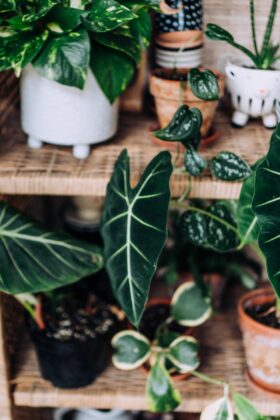
We all know that trees are responsible for cleaning up our air and producing the oxygen we need to survive. Photosynthesis is a process all plants undergo, from the tallest trees to the smallest shrubs and succulents. To brush up, this process converts carbon dioxide (what we breathe out) back into usable oxygen. Since there is little airflow indoors, the carbon dioxide we breathe out can get trapped in the air, making indoor spaces stuffy and uncomfortable to be in. Keeping indoor houseplants can bring that same air-cleaning effect that plants have outdoors into your home.
According to NASA, houseplants, like outdoor plants, can scrub the air in our homes of carbon monoxide, benzene, and other indoor pollutants, making our homes and indoor spaces safer overall.
Increase Productivity
As we’ve been cooped up these last two years, many of us have had to create makeshift offices and workspaces at home to accommodate remote work. You may have invested in a desk, a fancy new office chair, fun paper weights… but have you considered getting a plant?
A 2008 study out of the University of Michigan found that in addition to physically going for walks and interacting with nature, just looking at outdoors scenes while indoors can improve memory and attention spans by 20%. Having a houseplant around your workspace may be just what you need to improve performance and work focus.
Add Moisture to the Air
Plants are great for adding moisture into the air. During the winter months when heaters are maxed out and fireplaces roar, the air in our homes can get dry and stale.
During transpiration, houseplants release water from pores in their leaves, adding moisture to the air around them as well.
Not only is this added moisture beneficial for reviving the air in your home, it can actually help ease dry skin symptoms, sore throats, and common colds during the drying winter months.
Healing the Body, Healing the Mind

Not only can plants help prevent common colds and other small ailments, it’s been documented that indoor plants and flowers can positively affect healing and recovery. Research has shown that patients who received flowers and other plant life during recovery required less pain medication and were discharged sooner than those who didn’t receive greenery. It’s also been noted that plants can help lower blood pressure and improve memory.
This positive correlation may be a combination of the positive mental health benefits that plants have, in addition to the moisture they can provide. Either way, plants have a marked effect on recovery.
These positive effects aren’t just limited to physical health.
Plants have a positive impact on your mental health as well. Many people find horticulture therapy can be effective in alleviating symptoms of depression and anxiety; and it’s understandable why. Being around plants can improve self-esteem and mood while reducing stress levels. While definitely not the end-all-be-all cure for anxiety and depression, keeping plants may be the thing you need to help lift the gloom and raise your spirits.
Bringing the Outdoors In
The simplest benefit of keeping indoor plants is that they’re beautiful. There is so much diversity in all of the houseplants available, each one uniquely equipped to bring natural beauty into any space.
Having plants indoors can complement your already unique styles and tastes, soften lines, fill negative space, and bring pops of color that you can’t get from furniture or decoration alone. Plants remind us of vitality and of life. They remind us of the beauty that exists just beyond our homes, and they bring a little bit of that beauty for us to have for ourselves.
Walrath can help provide the soil for your indoor garden. Come in and explore our options today. We have locations in Gig Harbor, Tacoma, Lacey and Everett and are ready to help you find what you need to help your indoor garden thrive.





